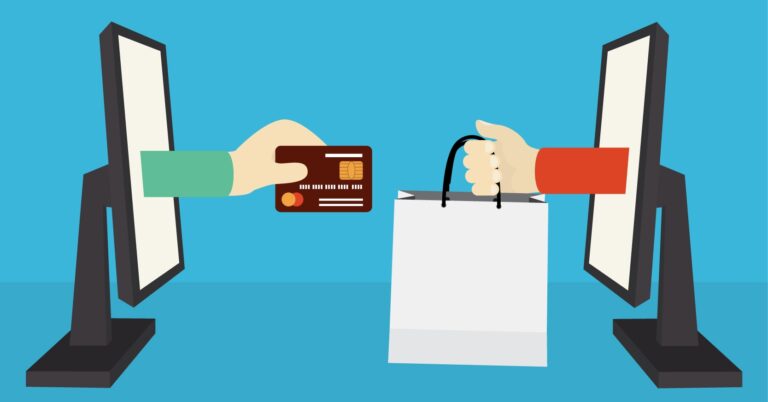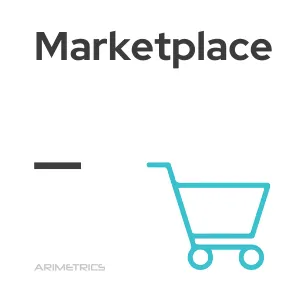
The e-commerce trend clearly isn’t going away anytime soon. And that’s why creating an e-commerce website is a great option.
In this post, I’ll explain the different types of e-commerce stores, show you how to get started on Shopify, and explore the trends shaping e-commerce.
Key Takeaways
- Optimize for mobile—most e-commerce traffic comes from smartphones.
- Leverage AI for personalized shopping, automated inventory, and SEO content.
- Sell across multiple channels—social commerce, marketplaces, and physical stores.
- Choose the right platform (Shopify, WooCommerce, BigCommerce) based on scalability.
- Drive traffic with SEO, paid ads, and social media marketing.
- Use automation and data insights to boost conversions and long-term growth.
What Is an E-Commerce Store?

An e-commerce store is a business that sells products and services on the internet.
These stores can sell anything from physical goods to digital downloads, like e-books, courses, and artwork.
There are lots of platforms you can use to create an e-commerce website, and we’ll look at some of them later in this article.
As the online world has grown, more brands are creating e-commerce stores alongside their brick-and-mortar stores to broaden their customer base and increase their profits.
Brands that take this hybrid approach should prioritize offering a seamless, consistent omnichannel experience to keep customers happy.
As e-commerce has evolved, the available technologies make it easier for businesses to manage their e-commerce stores and market to customers.
For example, many platforms now offer AI services to edit photos and write SEO-optimized product descriptions.
Types of E-Commerce Stores
Ready to make the leap into e-commerce? Let’s look at the common types of e-commerce stores to help you decide on your business model.
1. Individual Brand E-Commerce Stores

An individual brand e-commerce store sells its own products on its website. It may sometimes be referred to as a direct-to-consumer (DTC) store.
According to Retailinsights, there are 1.8 million brand retailers in the U.S. and 6.1 million worldwide.
An individual brand e-commerce store is a great option if you want to create a unique shopping experience for your customers.
You can also control the look, feel, and functionality of your shop, which gives you more flexibility to create the exact customer experience you want.
You also have complete ownership of all the data collected on your site, including customer information, which can give you a competitive advantage over larger e-commerce stores.
However, you need to invest time in your store to make it a success. For example, you need to ensure your brand storytelling is on point to stand out from your competitors.
2. Online Retailers

Online retailers are e-commerce stores that sell other companies’ products on their websites, often handling customer service, shipping, and returns.
For example, Dick’s Sporting Goods sells products from many brands, including Nike, Adidas, Converse, and more.
This type of e-commerce platform is good for businesses that want to start selling products quickly and easily without having to set up a store.
However, you often need to negotiate wholesale pricing and commit to the ongoing production of your products.
3. Marketplaces

If you want to start selling products but don’t want to set up a store, a third-party marketplace may be a fantastic option.
These platforms allow you to sell products without worrying about setting up and maintaining your shop. You pay a fee to feature on the store—this can be a flat rate or a commission on each product you sell.
Marketplaces and online retailers may seem similar at first glance. The key difference is that an online retailer handles the entire shopping experience, while marketplaces provide a platform for buyers and sellers to connect.
Amazon is an example of both a marketplace and an online retailer, as it sells products from its own inventory and offers a marketplace for other businesses to directly sell products.
The great thing about marketplaces is that there are many to choose from.
As well as the big players like Amazon, eBay, Alibaba, and Etsy, there are smaller, more niche options, too. For example, Poshmark is a go-to for selling fashion and home goods.
The downside of online marketplaces is that you don’t have a direct relationship with your customers, which means you won’t be able to fully control the customer experience.
Additionally, the marketplace owns any customer data. This can lead to lost opportunities for building repeat business or using data to drive advertising campaigns.
A good compromise is to use marketplaces as a supplement to an existing e-commerce store. For example, you can sell your product through your website but also offer it on Amazon or eBay to expand your reach.
Add Your Heading Text Here
Lorem ipsum dolor sit amet, consectetur adipiscing elit. Ut elit tellus, luctus nec ullamcorper mattis, pulvinar dapibus leo.
